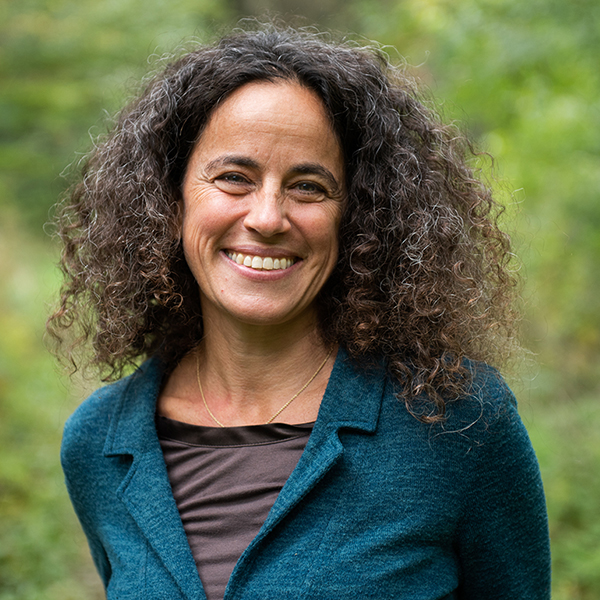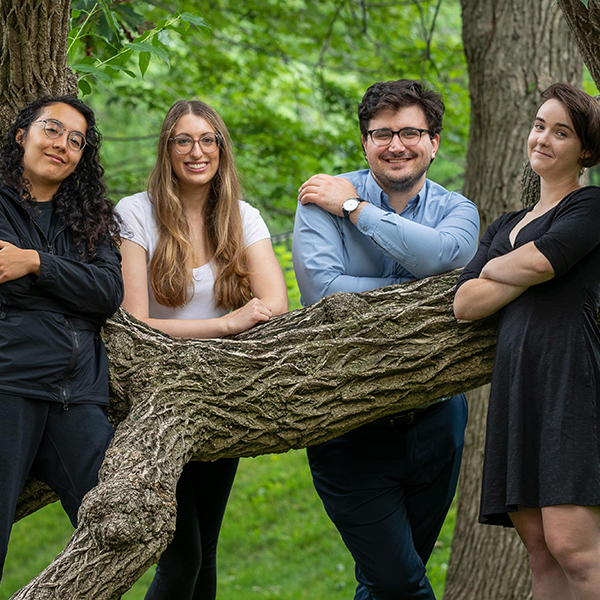For many seafood lovers, a lobster shell is a challenging means to a divine end – the succulent meat inside.
Less heralded is the chitin contained in its shell.
The handy fibrous substance can be transformed into chitosan, a biopolymer used in a range of products, from sutures and wound dressings to food supplements, cosmetics, and filters for municipal waste treatment.
But making chitosan on a large scale is problematic, primarily because it’s a polluting process.
Enter “green chemistry,” which tries to avoid the use of toxic, petrochemical-based solvents.
Using green chemistry principles, Audrey Moores, an associate professor in the Department of Chemistry at McGill’s Faculty of Science, and research assistant Thomas Di Nardo, MSc’18, made a two-fold discovery: they devised a cleaner way to make chitosan and developed a new material – a biodegradable plastic.
They wanted to make a chitosan that wasn’t soluble in water, reasoning that for some applications you may want to keep the material hard, Moores explains.
“Imagine making a grocery bag [out] of chitosan that is soluble in water. It rains, pffft,” she says. There goes the bag.
“We’re working with different partners at the moment to try to figure out how to apply [the new non-soluble chitosan],” says Moores, who received the Fessenden Professorship Award from McGill’s Faculty of Science to develop the commercialization aspect of this chemistry.
One application would be to try to make bioplastics from it, with products such as plates and cutlery.
“But there are other avenues that we want to pursue, and try to see if our process could help with existing facilities or people who are transforming chitin into chitosan,” says Moores. “To see if we could tap into the biomedical applications, for instance, because that’s a higher revenue stream. So maybe it’s easier to get into the market with this.”
Chitosan is made on a large scale in China, but “it’s really a dirty process”, says Moores. It requires a corrosive viscous solution, posing a risk of spills and workplace accidents. The process also generates lots of aqueous waste, which is difficult to clean and is highly corrosive.
The method developed in Moores’ lab doesn’t use any water during the chemical reaction that converts chitin into chitosan.
“That’s what’s new and that’s what’s interesting,” says Moores, who notes that people in Canada don’t make chitosan because of the problems involved with making it and the difficulty of competing with China.
“We did this by essentially figuring out a way to make the chemistry happen in a solid state as opposed to liquid state,” she says.
They used far less water to clean the product and the resulting effluent will be much cleaner and easier to handle than the existing process, Moores says.
She likens the process of converting chitin to chitosan, which involves modifying what’s on the polymer, to altering a necklace.
They showed they could use “mechanochemistry-based and solvent-free-based methods to transform those polymers into new polymers. But the key part of our work was to demonstrate we didn’t damage the polymer itself,” she says.
In jewelry terms, they could selectively change the colour of the beads without breaking the necklace.
“That was kind of new, because the paradigm in the field was that these [mechanochemistry] methods were not good for preserving polymers” because they would be too fragile and get damaged.
Mechanochemistry uses mechanical force rather than heat and solvents to spark a chemical reaction; in this case, it meant pounding the extracted chitin, a white powder, in a mechanical mill to transform it into chitosan.
Some chemists around the world have opposed the concept of green chemistry. “They think that science should be only about discovering things and not necessarily discovering things that are in a context of an application that could end up being a benefit for the environment or for health. Which is a little bit of a weird thing,” Moores says.
She’s always felt as a citizen and researcher that if you could do good science with those benefits, “you should not shy away from that.”
McGill has pushed for green chemistry and invested heavily in it, says Moores, who believes the science approach has earned its laurels.
“We’re finally getting to a spot where there’s an incredible understanding now of the role of solvents in chemical transformations, which are really changing the practices in pharma, for instance. There has been a big reduction in the use of solvents [and the] replacement of bad solvents with better solvents in a number of facilities around the world.”
McGill is home to a strong hub of sustainability research, of which green chemistry is part, says Moores. She welcomes the collaborative and multi-disciplinary research nature of the McGill Sustainability Systems Initiative (MSSI). “I think that this will be a real game-changer in terms of research.”
Chitin is found in the shells of other crustaceans as well as insects and in some fungi. Between six to eight million tons of crustacean waste is generated annually around the globe, according to Moores.
The majority of the waste in Quebec and the Maritimes comes from crab and lobster shells. “This is really good quality stuff actually, so it’s very appealing to try to use that,” she says.
The shells smell a bit, Moores acknowledges, but not once you remove the protein from them.
“I think people have this vision of plastic that it is something that is transparent and very flexible. And they don’t realize that there are all sorts of plastics. They come in all shapes and forms and if you’re smart enough what you can do is use an existing polymer that nature made and transform it, as opposed to trying to reconstruct it from scratch.”


